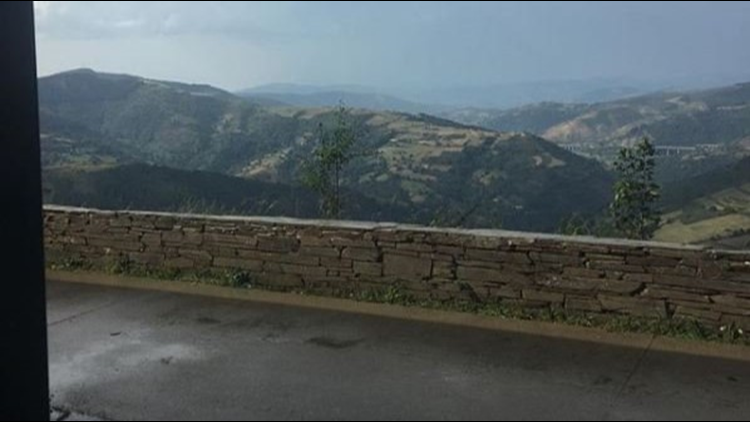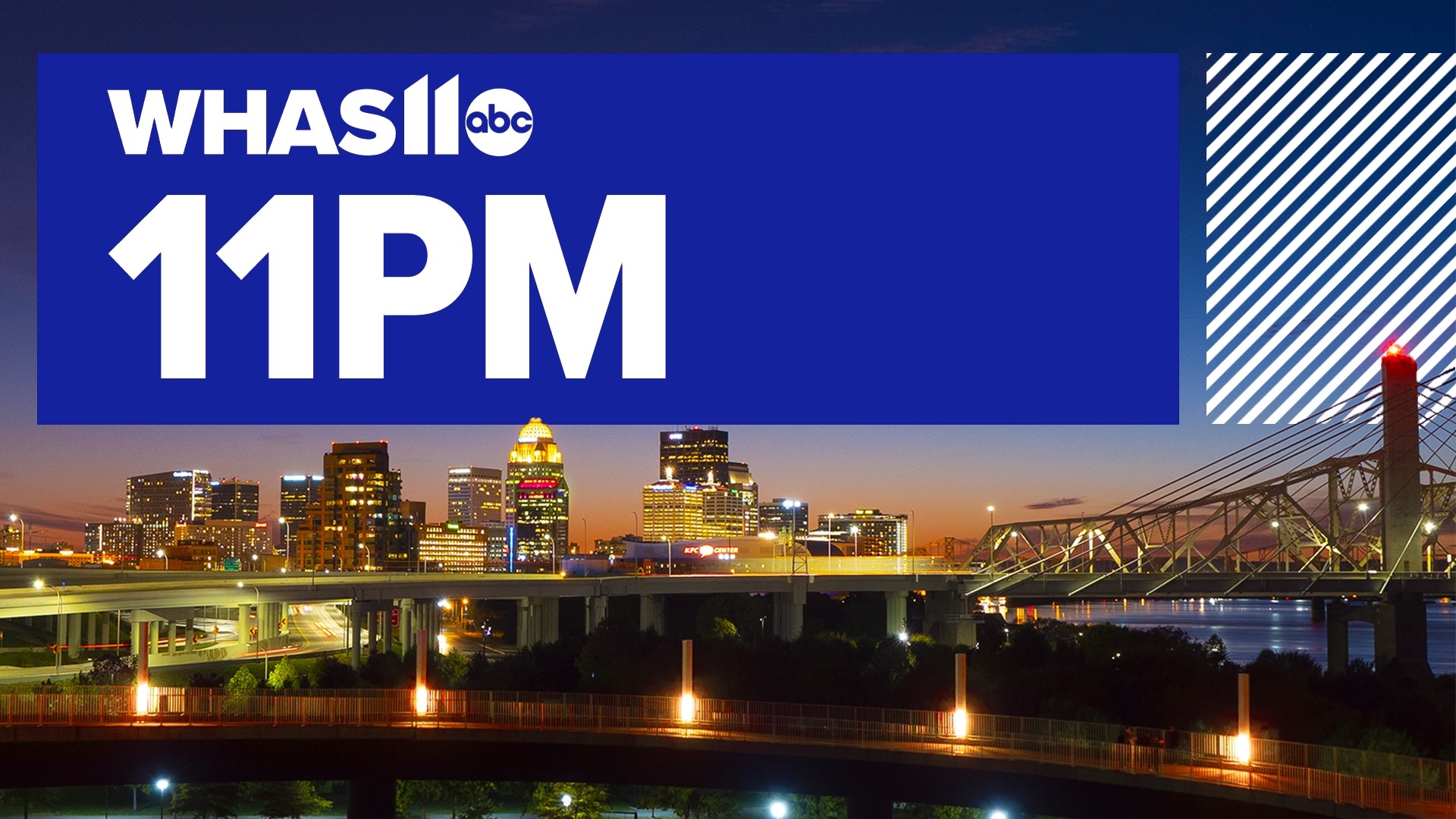LOUISVILLE, Ky. (WHAS11) – From August 30 to September 5, Father David Sanchez trekked from the village of Hospital de Órbigo to Palas de Rei in the Galicia region in northwest Spain, wrapping up the eighth week of his pilgrimage to help save the steeples of St. Joseph’s Catholic Church in Butchertown.
Week eight brought a change of scenery as the dry, flat paths of northern Spain began to give way to the lush, mountainous terrain leading to Spain’s northwest coast. Sanchez now faces a decision about how to use the extra time he’s gained from maintaining a fast pace in the early stages of the trek. He is well ahead of schedule with roughly 40 miles to go before reaching Santiago de Compostela, the culmination of the Camino de Santiago.
EDITOR’S NOTE: Excerpts have been taken directly from Sanchez’s blog at wherespadre.org.
“From Astorga to Rabanal the scene changed. It was more green and the vegetation had more volume. I was getting bored by the dried land before.
“We stopped at El Ganso for breakfast, after St. Catalina de Somoza.

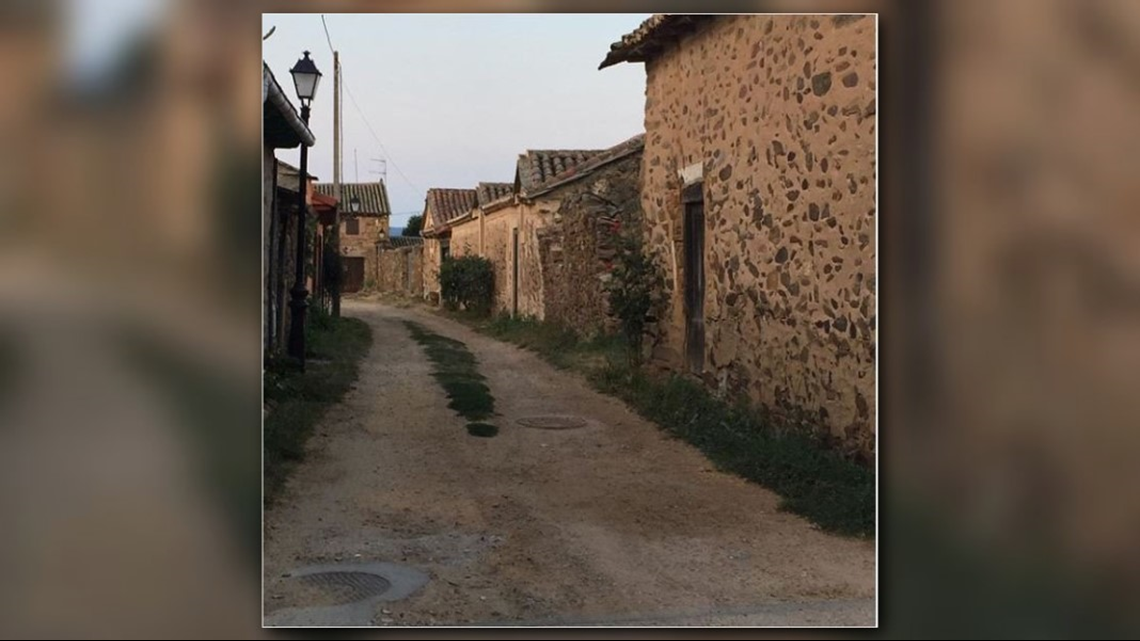
“Arriving to Foncebadón was a shock for Marcos who has been here 4 times. The village has changed from a traditional town with old homes and stones streets to a comercial center for peregrinos, and paved streets. There is a lot of new shelters now, and the old buildings have been repaired for businesses.
“We had a great lunch at a local old medieval restaurant. It was delicious. The portions were so big that we did not have dinner.
“I returned to 30 km/day walk. I have plenty days to reach Compostela, but the company is priceless. Therefore, I walk with a nice group of people. I may reach Santiago de Compostela before my plans, but I need to reach Fisterra and Fatima too. I may go all around the world and come back to Santiago for my birthday.”

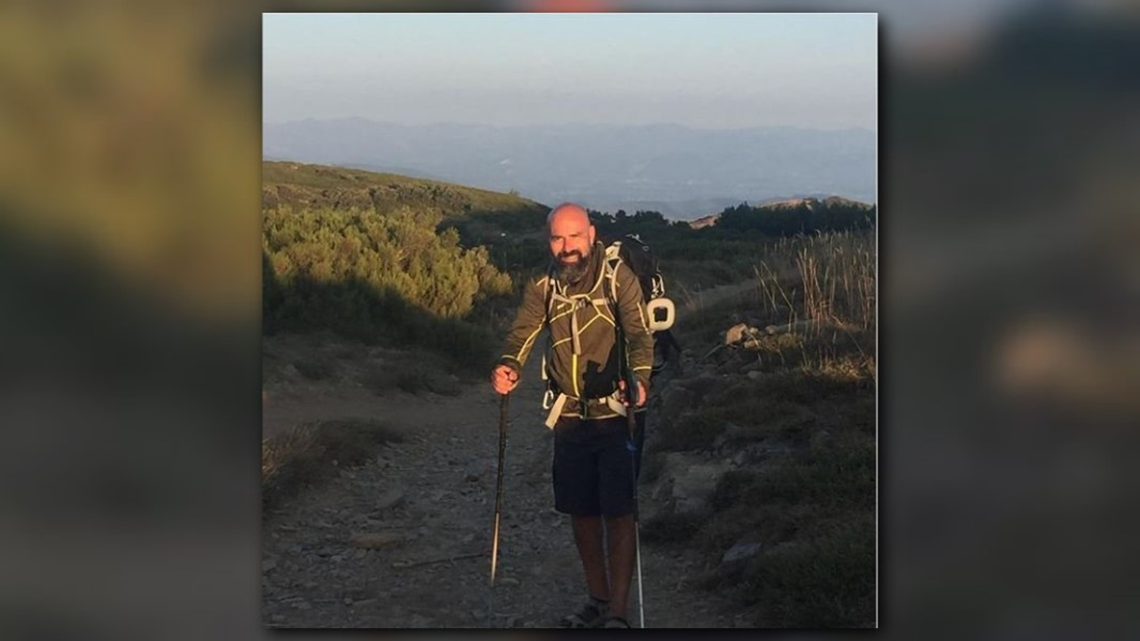
On Sunday, Sanchez departed Foncebadón for the village of Villafranca, one of the last stops before a challenging climb in the Cantabrian Mountains on the Galician border.
“Hills of red grapes welcomed me to the village. I was tempted to taste the grapes, and I did! They were sweet, sweet, and sweet. The wine growers were working in the fields. It was like Tuscany in Spain.

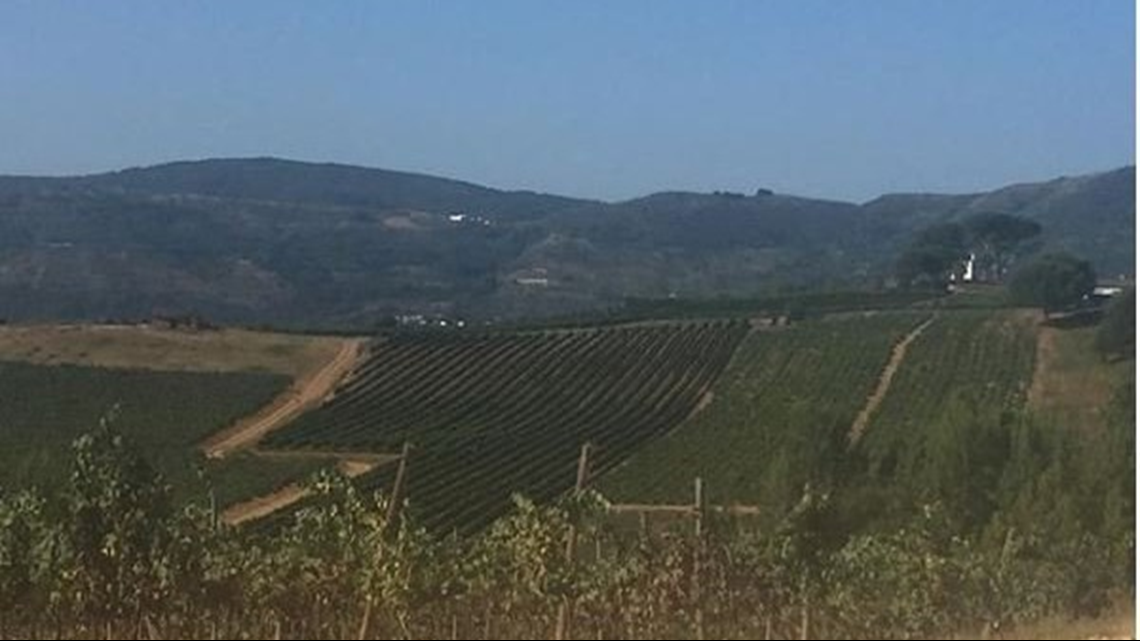
“The beautiful mountains of Galicia served as a natural drapery in the distance. The houses’ style was more Mediterranean than from the north of Spain. It gave me a flash back to Italy.
“Marcos and me had a great time running down the hills. We are fast walker, therefore, we always arrive early to the albergue.
“There are merchants that visit the small villages with products. They horn loud that people can know about their arrival. They are frequently selling bread or produce. Today we were surprise to see a man selling all kind of fresh fish and calamari. I had to take a picture of it. It was a beautiful presentation to the costumers.

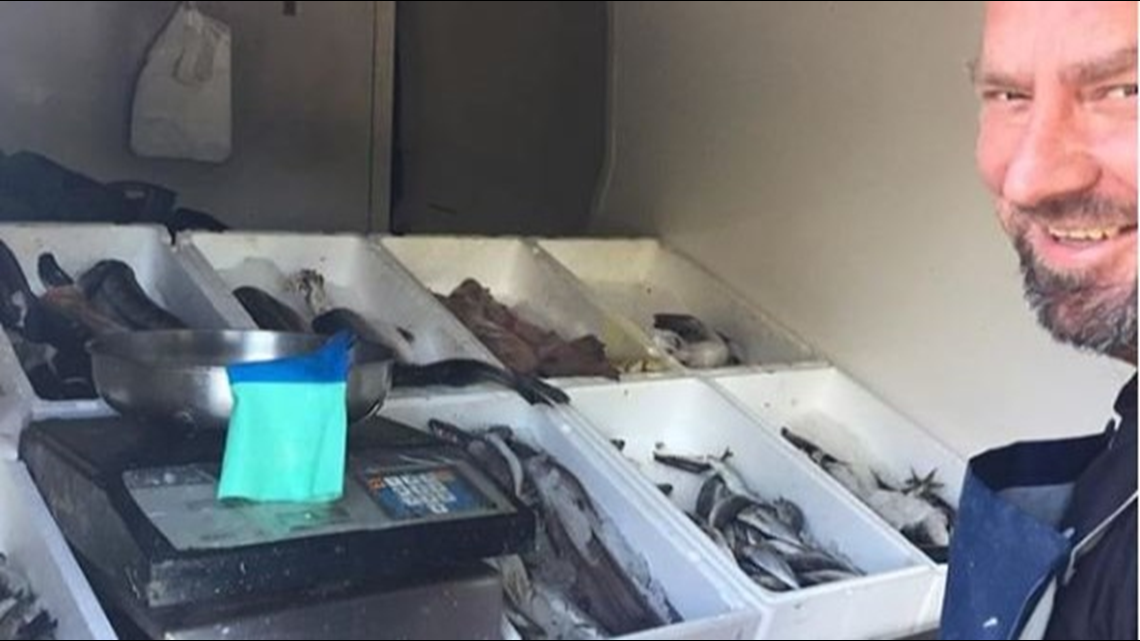
“Villafranca was a medieval village with a beach. The locals have created a beautiful beach at the river. Hundred of people and walkers met there in the afternoon to enjoy the refreshing waters after a long walk.

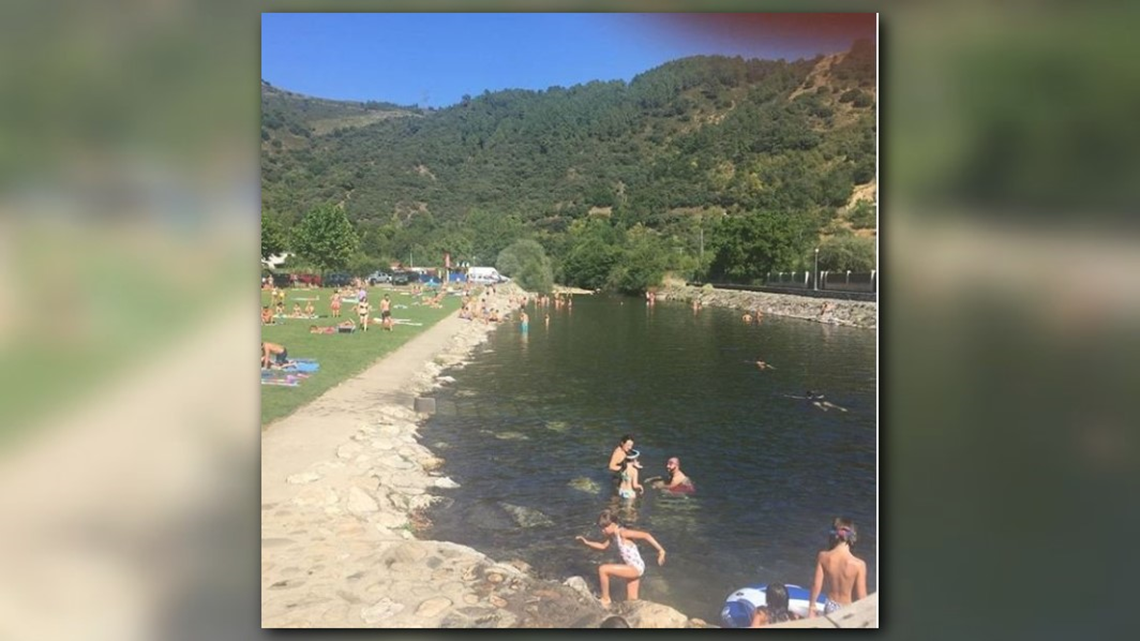
“The real test for all walkers was after Villafranca. After ascending between mountains on the road, we were challenged to reach the highest point of El Camino in Spain. Marcos, Oscar, and me started walking at 6:15 am. Marcos and me at one point started running that Oscar was left behind. The ascension to O Cebreiro was brutal. We had breakfast in the village Ambasmestas before the ascension. It was a real test of endurance. Marcos was 100 meters in front of me at all time. I arrived around noon, and Oscar follow. He got the first blisters today on his second day.

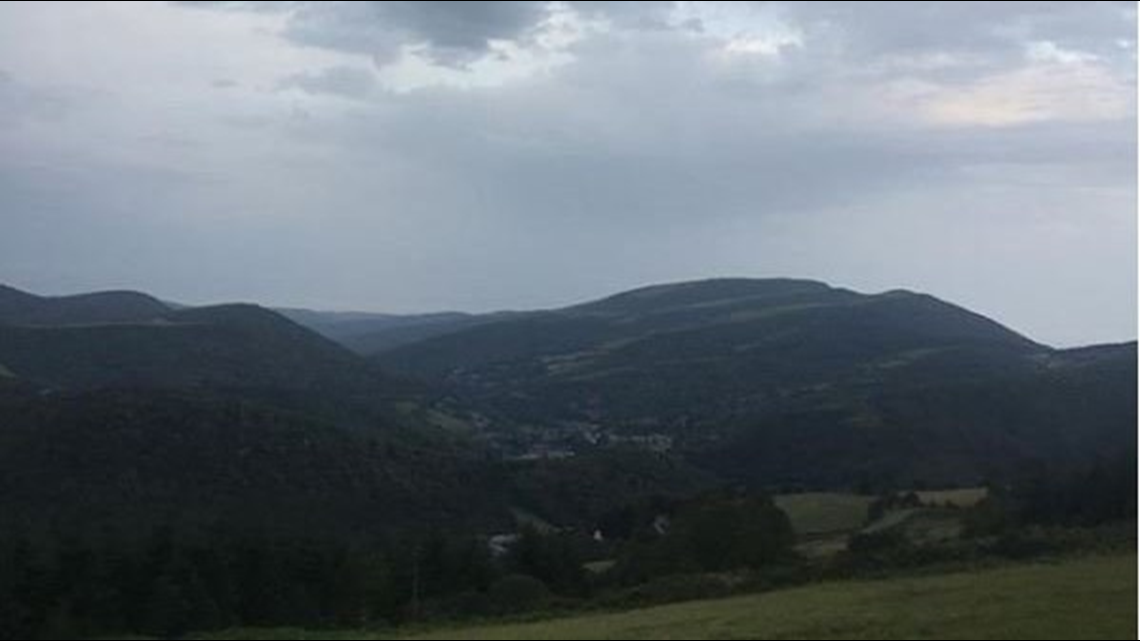
“The albergue opened at 1pm. Marcos went out for lunch, and I stayed at the door of the albergue getting some rest.
“Javier and Fernando from Madrid, Oscar and me went for lunch at an amazing restaurant . The food was delicious.
“In the afternoon I went to mass, and enjoyed the evening with a group of Italians that know how to have fun playing guitar and singing.”
After visiting a “village in the clouds,” Sanchez entered the region of Galicia. Located in the northwest corner of Spain, Galicia borders Portugal to the south, the Atlantic Ocean to the west, the Bay of Biscay to the north, and the Spanish regions of Asturias and Castilla y León to the east.
“O Cebreiro will give you the most espectacular view of El Camino. It was a village in the clouds. Saying that implies that this morning I was descending for almost 20 km. I run all the descending with Marcos. Oscar, Fernando, and Oscar stayed behind. Only Gonzalo, Alex, and Mario kept behind us, but made it to our albergue at Samos. We took the alternative route that would take us to the older Benedictine monastery in Spain.

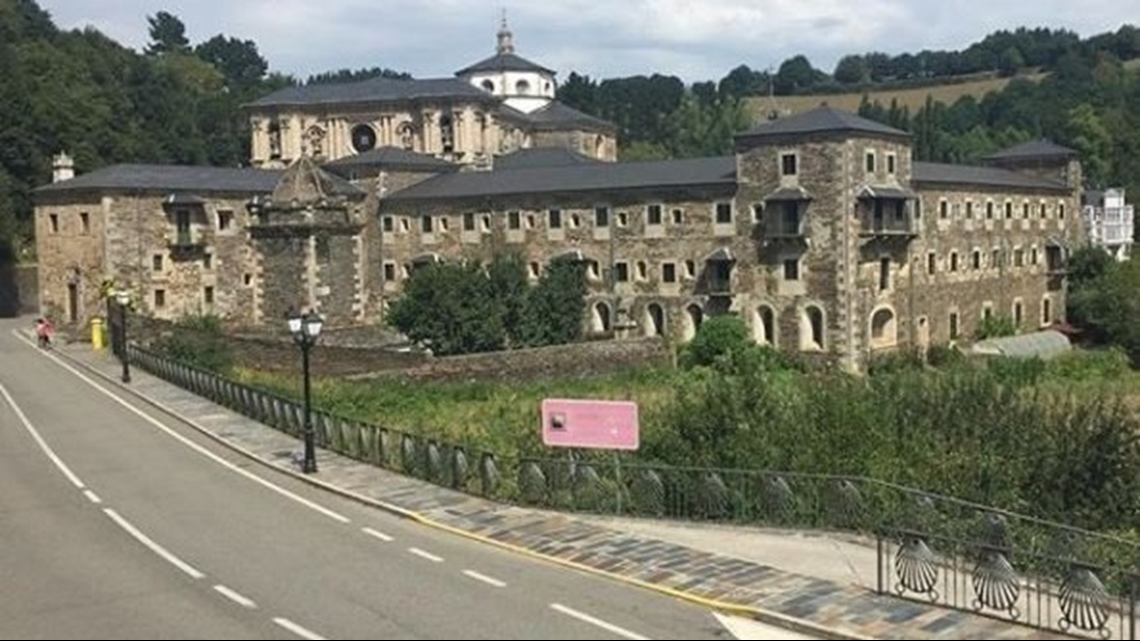
“Galicia is a beautiful Region. The mountains, and the natural terrain make the area a perfect walk. Running this are was a perfect event.
“Arriving to Samos by a hill, you will have a awesome view of the monastery. The walls of rock made through the years introduce you to the valley.


“For dinner a Italian man invited all the guest to eat a great Italian dinner. We just paid for drinks.
“It was a great night of conversations, dinner, beer, and wine.”
Walking through the towns of Sarria, Portomarín and Palas de Rei, Sanchez began to face the end of his journey. Though he still has roughly 40 miles left on El Camino before reaching Santiago de Compostela, the increase of tourism along this stretch of the trail threatens to change the dynamic of the remaining miles.
“Galicia is an enchanted region of Spain with a Celtic tradition. The mountains, and rivers bring a different dimension to El Camino.
“Chemim in France, Camino in northern Spain, now I entered the Camiño in Galicia.
“It can sound hard to many lovers of El Camino, but El Camino ends in Sarria. After walking 1400 km, I can say that. I am so happy that I stopped in Samos to see their monastery. The last reflection for a long spiritual journey.
“Alejandro, Mario, Marcos, Gonzalo and Lola have brought me great moments of joy that I will never forget. What a group! All doing the Camiño searching for a moment where life is revealed itself to them. Every second, every minute, every hour, our encounter has had a heavenly intercession.
“Why Sarria is the end of El Camino? Arriving to Sarria I was suffocated by tourism. Buses, taxis, people every where. After 15 km walking and see people with clean shoes, invisible backpacks, dropped everywhere. They were dropped in the city, in every intersection, in El Camiño. Taxis waiting for people just 100 meters from where they were dropped to go 10 km up el Camiño to continue. It just take away the essence of El Camiño.

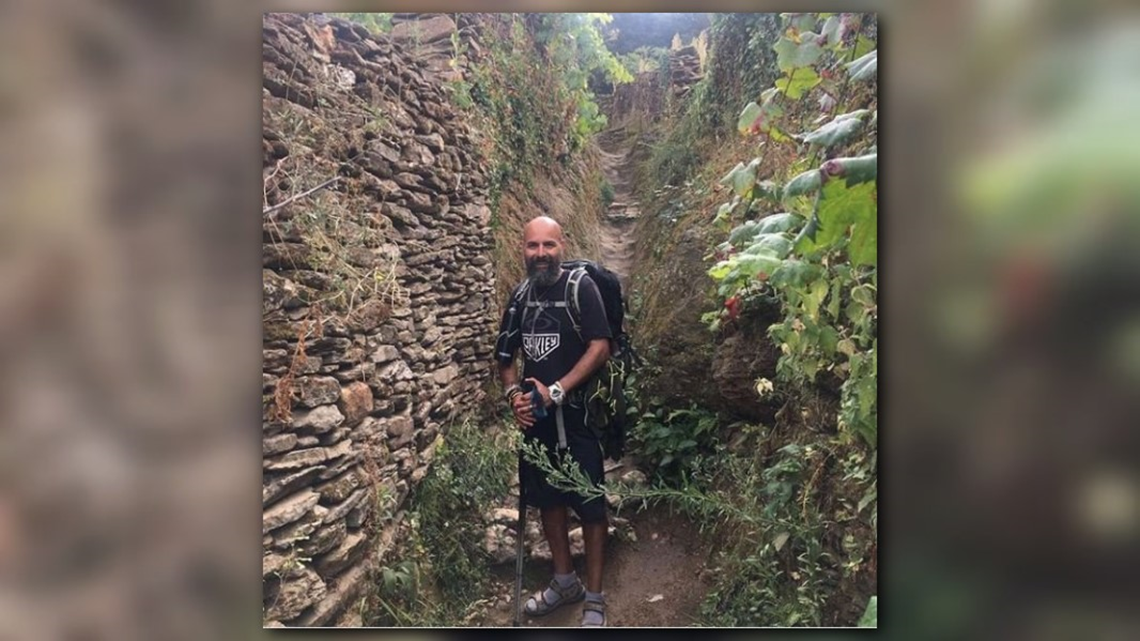
“Today, after 20 km walking from Portomarin to Palas de Rei, a bus passed me full of tourists and dropped them 125 meters in front of me. I kept my speed but because they are so many, they did not care to let you keep your speed. Many times I had to say: excuse me. It is critical when you have been walking all day (30-40km) and you need a bed to sleep. Those in taxis and buses are picked up before the villages, and then dropped by the albergues. I have been lucky to find a place to sleep, but I have seen others with no such a luck. They have to continue walking to the next village or pay for an expensive place.

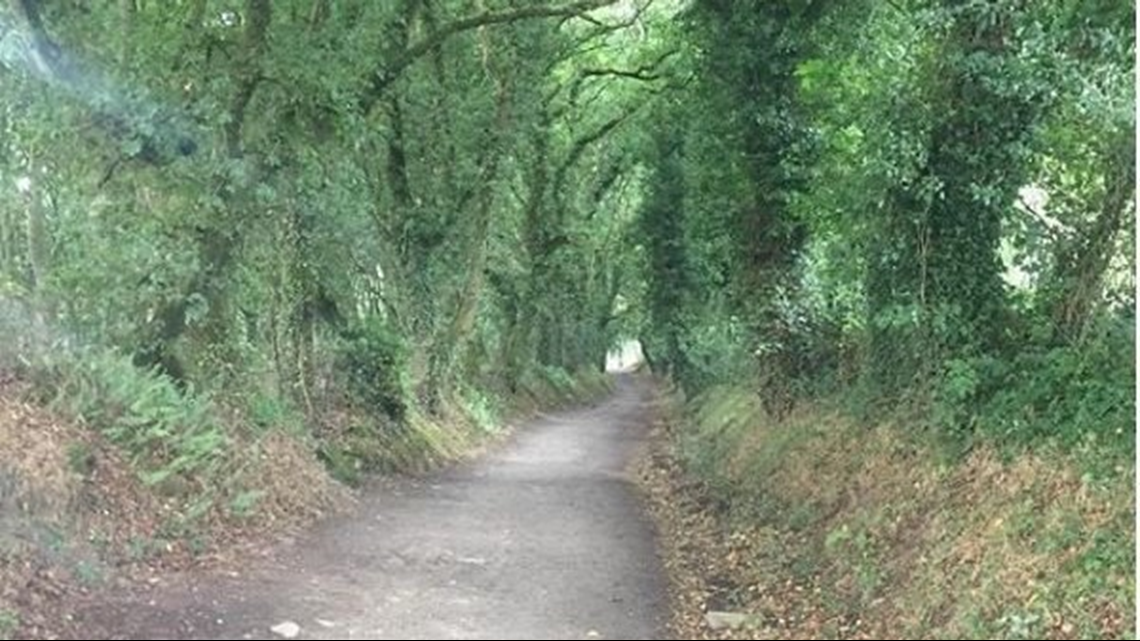
“Gonzalo told me today that I should talk today about the beauty of El Camiño experience, but the above is a reality too. Many times today as I walked and run the hills of Galicia, and I had to fight this in my mind. Tourists were a negative distraction. No everyone that say to you, I did El Camino has done it. No from taxis, no from buses. It is not only 100km. It is a life!”
You can see select excerpts from Father Sanchez’s blog every week right here on WHAS11.com.
Sanchez’s full blog and additional photographs can be found at wherespadre.org.


